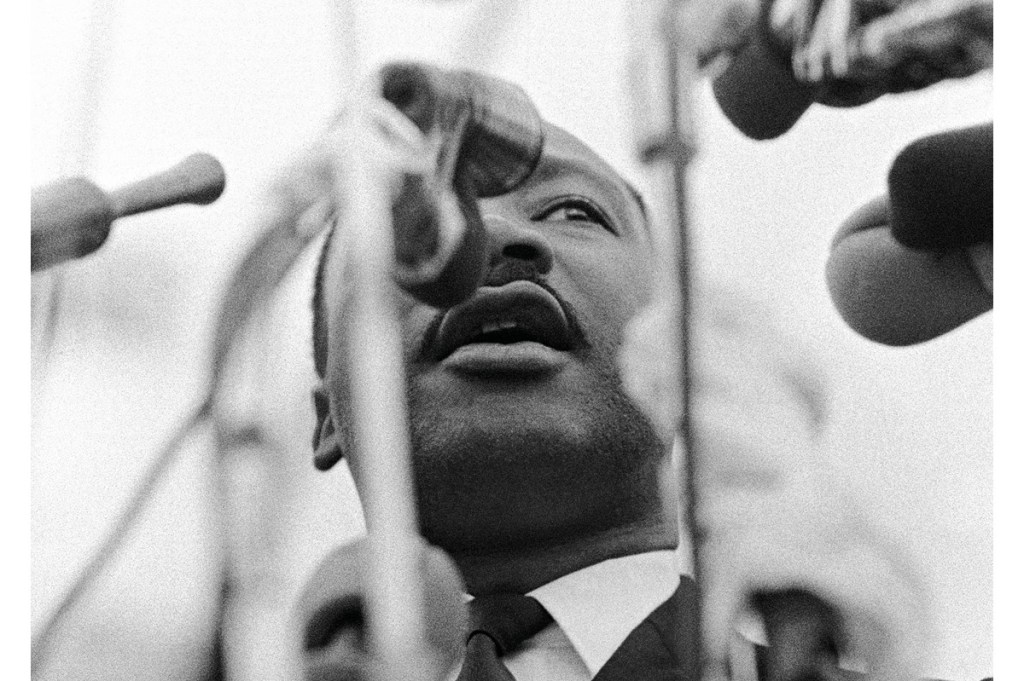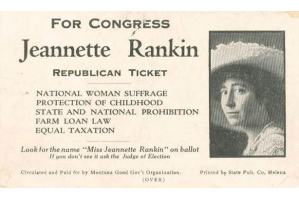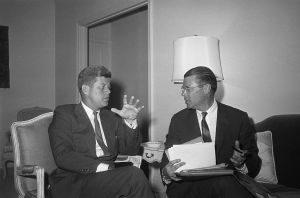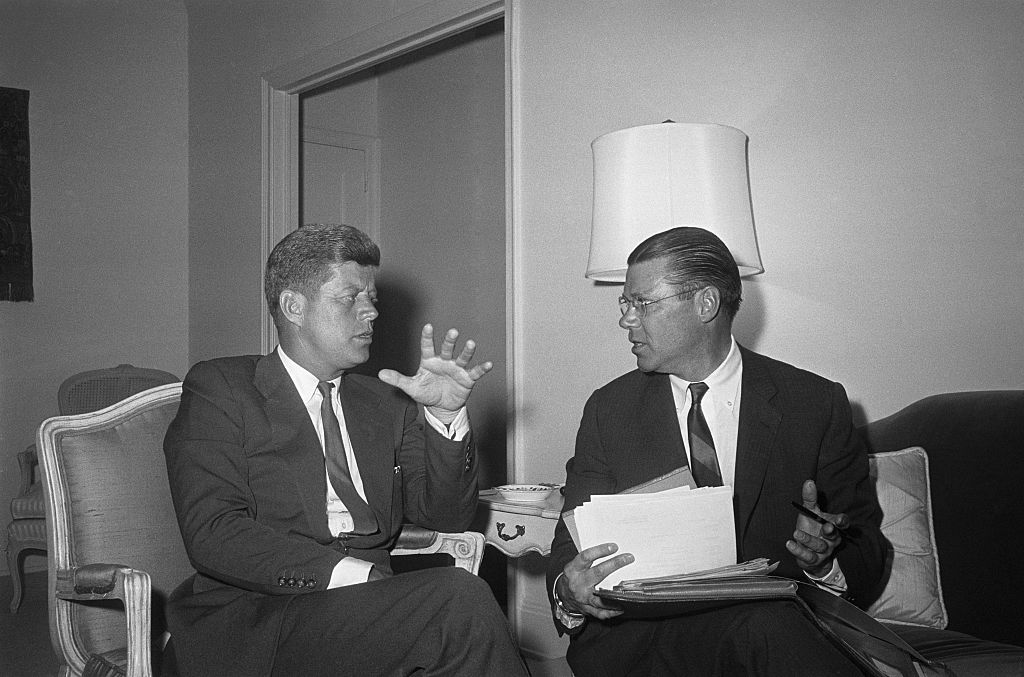Jonathan Eig’s new King: A Life (KAL) is the first comprehensive biography of the black civil rights hero to appear in more than thirty years, and it will succeed my own Bearing the Cross (BTC), published in 1986, as the standard account.
One normally does not review a book one’s blurbed — I’ve called it “a great leap forward in our biographical understanding” — nor where one’s actively aided the author’s research and read his manuscript multiple times. But comparisons between KAL and BTC will be legion, so highlighting the three most significant ways in which the two biographies differ will be a service both to the thousands of readers whom Eig’s volume should attract and to students of King’s life more generally.
Forty years ago, I took to heart something the civil rights icon Miss Ella Baker said just two months after King’s 1968 assassination: “The movement made Martin rather than Martin making the movement.” Thus BTC begins with the 1955 arrest of Mrs. Rosa Parks, which kicked off the Montgomery bus boycott, not with King’s birth, and devotes only twenty pages (of 625) to King’s twenty-six years before his elevation as the Montgomery protesters’ spokesman.
Eig in contrast has structured a far more traditional biography, devoting 135 pages, almost a quarter of his text, to King’s pre-boycott roots and life story. The digitization of old African-American newspapers, census records and other previously obscure documents has allowed him to craft by far the richest and most compelling history of King’s family and childhood yet, one that will remain definitive for decades to come.
King grew up in a rigidly segregated society, yet his familial privileges as the son of a notable Atlanta minister allowed one family friend to tell the famed black writer James Baldwin that the younger King “came through it all really unscarred.” As King wrote in a divinity school essay, it was “quite easy… for me to think of the universe as basically friendly.”
At the other end of King’s life, though, KAL’s and BTC’s proportions are reversed: Eig covers King’s final 365 days — from his famous April 4, 1967 speech denouncing US conduct in the war in Vietnam, to his April 4, 1968 murder in Memphis — in just thirty-five pages, whereas BTC devotes more than double that to those final twelve months. Eig does an excellent job of repeatedly highlighting how demanding and draining King found public life, and newly available White House tape recordings allow him to paint the richest possible picture of King’s deeply complicated relationship with President Lyndon B. Johnson. It is understandably difficult for anyone to add new interpretations to such familiar stories as the 1963 Birmingham protests and the 1965 Selma voting-rights campaign, but Eig’s crisp narrative of key 1960s events touches all essential bases.
The second major contrast between KAL and BTC is the vastly greater attention Eig gives to Coretta Scott King. Being married to Martin Luther King Jr. was no bed of roses, in part because King was a deeply retrograde sexist even by the now-outdated standards of his time. Before marrying, Coretta had dreamed of being a concert singer, but King opposed women combining family with any career — “when a mother has to work she does violence to motherhood by depriving her children of her loving guidance and protection,” he wrote in his first book, Stride Toward Freedom. In addition, he grew up “in a time and in a culture where adulterous activity was commonplace,” Eig notes, and even as a student King was aware that “there was a great deal of gossip about Reverend King” Sr., his childhood friend June Dobbs told Eig. “It obsessed him,” Dobbs recalled, and King worried whether he would follow in his father’s footsteps. “He tried to be honest about it,” Dobbs added, but he most certainly did tread that path.
The third great difference between KAL and BTC is by far the most consequential. When I first met Dorothy Cotton in September 1979, I already knew that those closest to King spoke privately of Cotton as his “real wife,” and while Cotton, a close aide in King’s civil rights work, was entirely eager to talk about King, she likewise made it crystal clear that she did not want to be characterized as his consort rather than his colleague. Thus in both The FBI and Martin Luther King, Jr. (1981) and in BTC, and in all my subsequent writings up through the time of Cotton’s 2018 death, I never explicitly named her as King’s most important life partner in the years after 1963 — nor did any other King scholars.
Cotton was a warm, enthusiastic, outgoing woman — the word “bubbly” comes to mind, as does the pink chiffon that decorated one of the rooms in her Atlanta home — and anyone who knew both Cotton and Coretta Scott King would not for a moment doubt who someone badly in need of emotionally supportive companionship would choose to spend time with.
Eig’s narrative covering from 1963 to 1968 details again and again, using King’s own office records as well as FBI surveillance reports, how often King stayed with Cotton, especially at a “hideaway” Atlanta apartment rented in the name of an aide, rather than at home with Coretta and the four young children whom she was raising almost singlehandedly. What Coretta endured both during King’s lifetime, and in the immediate aftermath of his horrific assassination, would not have made anyone a happy, upbeat personality, and my own face-to-face conversations with her in the early 1980s made clear that she was a sad, lonely, yet deeply disciplined woman. Eig poignantly quotes from Maya Angelou’s 2006 eulogy of Coretta, in which Angelou, herself a strong black woman, lamented how Coretta had been “destined to become a steel magnolia.”
But Cotton was far from alone in King’s private life. He also carried on a years-long affair with Dolores Evans, the young wife of a California dentist; she gave birth to a daughter, now fifty-seven, at a time when she and her husband were facing off in a Los Angeles divorce court. When writing BTC I was aware of a dozen or so additional King girlfriends — one in Miami, one in San Diego, another in Atlanta, etc. — but the largely unredacted FBI records released by the National Archives in 2018 allow a careful reader to identify many more — in Philadelphia, Chicago, Mount Vernon, New York, etc. — with the sum total of paramours approximating perhaps forty. Even in BTC I acknowledged that King’s behavior was beyond question “compulsive,” and four decades later it’s impossible to review the newly available details of King’s phone calls to multiple women without that word coming to mind.
King’s troubled private life also featured recurring episodes of binge drinking. BTC described how King was abusing alcohol in early 1968, but FBI surveillance and other law enforcement reports — most powerfully an interview with a Las Vegas prostitute following an all-night threesome with King and another woman — allow Eig’s book to show how King had a serious alcohol problem even at the outset of 1964. It’s imperative to appreciate that King’s deep discomfort with his public fame stemmed from the fundamental fact that he “had not sought a position of leadership,” as Eig rightly emphasizes. King appreciated as early as 1960 that a movement requires “someone who becomes the personification of the cause,” but he knew better than anyone that “I’m a pretty unprepared symbol.” Eig perceptively writes that “King understood that he was a performer,” that when “he stood before a crowd” he “became something larger than himself.”
Yet only the handful of people truly close to him — and, by 1963-64, the FBI’s ubiquitous intercept listeners — appreciated what a tremendous private emotional toll the endless public demands took on him. In 1961 King Sr. told an interviewer that “what he has done, he has done under a sense of compulsion,” since “he didn’t choose this role and he can’t reject it.” Years later, King Sr. acknowledged that his son had been “scarred by the struggle in very serious ways.” By 1968 King was “emotionally weary, as well as physically tired,” Dorothy Cotton recalled, and fellow staffer Jesse Jackson admitted to Eig that King “was wrestling with depression.”
Psychiatry professor Nassir Ghaemi will detail in a forthcoming book how he has perceptively, and pioneeringly, concluded that King suffered from what was then called manic depression (now more often known as bipolar disorder). To one close friend, King justified his endless philandering as a form of “anxiety reduction,” as BTC reported, but it caused him endless difficulties on multiple fronts, and not just with the logistical difficulties of juggling so many partners. First, it ate at King himself in his sober moments, for as Coretta rightly said not long after his assassination, “he had a very strong moral conscience and he could not do wrong and not feel guilty. He would feel guilt that would just eat him up.”
But, more consequentially, as Eig’s history shows, it deeply poisoned his relationships with Attorney General Robert Kennedy as well as President Johnson, given how insistently the FBI peppered both men with reports on King’s conduct. After August 1963, when the FBI obtained its first intimate insights into King’s private life, its earlier warnings that King was supposedly susceptible to “Communist influence” because of multiple advisors’ past allegiances became little more than a fig leaf for an all-out assault predicated on the belief that King was morally unworthy to be black America’s premier spokesman, as I first explained in my 1981 book.
King knew he was being wiretapped and bugged — indeed, President John F. Kennedy had told him as much — yet he was both reckless and defiant in refusing to change his ways because squads of FBI agents were recording him at home, at the office and at dozens of hotels with Evans and other women. Eig’s narrative recounts all of this in knowledgeable and sometimes painful detail: the FBI was distributing accounts of King’s behavior to dozens of federal officials plus select private citizens. Although the journalistic mores of the time protected King from public exposure, the behind-the-scenes damage done to his reputation as the movement’s indispensable leader was incalculable.
Only come early 2027 will the court seal covering the FBI’s full collection of wiretap transcripts and hotel recordings expire, but until that time, and almost certainly thereafter, Jonathan Eig’s King will remain the best-informed account of this deeply courageous, yet also deeply flawed, life.
David J. Garrow won a Pulitzer Prize for Bearing the Cross: Martin Luther King, Jr., and the Southern Christian Leadership Conference. His most recent book is Rising Star: The Making of Barack Obama. This article was originally published in The Spectator’s May 2023 World edition.

























